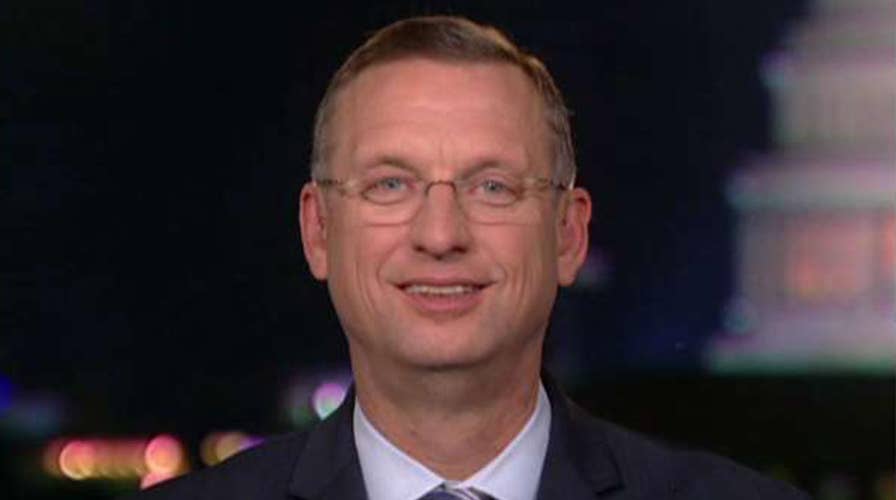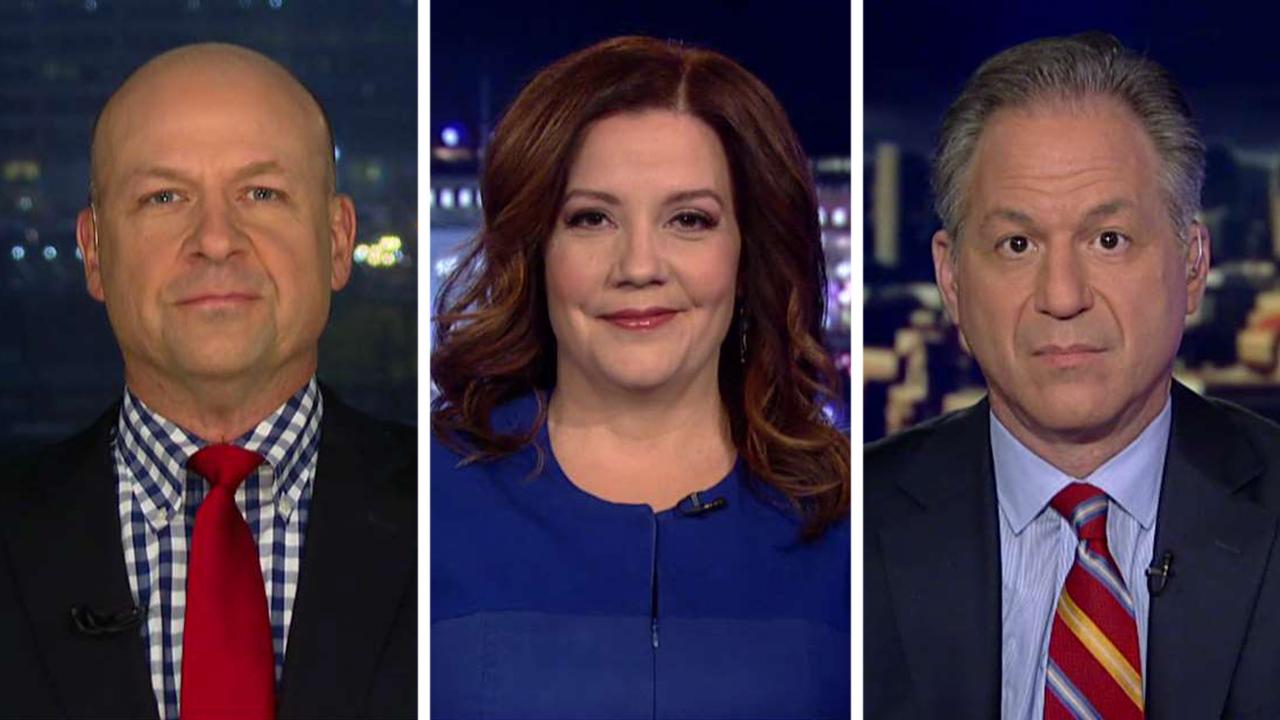Rep. Collins on impeachment vote, possibility of John Bolton testifying
John Bolton invited to testify in impeachment inquiry; House Judiciary Committee ranking member Doug Collins weighs in.
CAPITOL HILL – The House of Representatives is set to debate and vote Thursday on the resolution formalizing the impeachment inquiry against President Trump.
Remember, this is not a vote on articles of impeachment. This is simply a vote to codify the investigation. It is a “resolution,” not a “bill.” It is not “legislation.” It’s a resolution because it’s an internal House matter.
The House meets at 9 a.m. ET. Fox News is told the House will get to the measure rather quickly after some initial bookkeeping and short speeches. Debate likely starts around 9:10-9:15 a.m. ET.
House Rules Committee Chairman Jim McGovern, D-Mass., is set to manage the measure for the Democrats on the floor, with Rep. Tom Cole of Oklahoma, the top Republican on the Rules Committee, running things for the GOP.
The resolution itself – which the House Rules Committee processed into the night Wednesday – will receive one hour of debate on the floor. A “straight” one hour on the House floor is more like one hour and 15 minutes or more. There are constant fits and starts. If things move quickly, without interruptions, the House could complete debate by 10:30 a.m. ET.
However... this is Congress. As one lawmaker said years ago when she was called into a meeting in the majority leader’s Office at 1:20 a.m. on a Saturday, “things kind of happen around here when they happen.”
There are several possibilities which could elongate the debate:
- The House is simply crawling and the debate takes longer than expected.
- Republicans launch dilatory tactics in protest – such as motions to adjourn, et al. A motion to adjourn is “privileged” and the House must consider it right away. Multiple motions to adjourn or other guerilla tactics are in the mix. All these efforts do is stretch out the process and chew up a lot of time.
- House leaders from both sides of the aisle take advantage of their “Magic Minute.” Most members just get a minute or so to speak on the floor. But, out of respect, the House allocates a “Magic Minute” to top leaders, including House Speaker Nancy Pelosi, D-Calif., House Minority Leader Kevin McCarthy, R-Calif., and others. The top leaders could take five to ten minutes to speak, if they chose. The extra time would not count against the overall “hour” allocated for debate.
The following is subject to change, but here is how the next steps may play out following the conclusion of the debate:
At the end of the debate on the resolution, the House will begin a vote series. This is a collection of various votes on different topics.
The vote on the resolution itself should be the second in the queue. The first vote in the sequence is procedural and in relation to the resolution. It’s known as “Ordering the Previous Question,” or a “PQ” in Congressional parlance. It is a “vote to have a vote.” The first vote usually consumes about 25 minutes. So, the vote on the resolution itself likely would start about 25 minutes after the beginning of the vote sequence.
Here’s a hypothetical:
If the vote series starts at 10:45 a.m. ET, that means the vote on the resolution would begin around 11:10 a.m.
The House likely will schedule the vote on the resolution to take five minutes. In reality, that means it will eat up seven or eight minutes on the clock. So, once the vote begins on the resolution, a result could come about seven or eight minutes later.
The resolution is expected to pass. Note that the House will probably cross the threshold for adoption while the vote is still open, but nothing is official until the chair raps the gavel and closes the vote.
The House “scoreboard” on the TV monitors would not reflect the accurate tally. The result the chair announces from the dais is official.
SPARKS FLY AS DEMOCRATS PUSH IMPEACHMENT RULES OVER REPEATED GOP OBJECTIONS
How is the vote expected to turn out?
The House has 432 members, as Rep. Katie Hill, D-Calif., has not officially resigned yet. She is expected to give her final speech before resigning midday.
The 432 tally would make the threshold for adoption 217 yeas.
House Minority Whip Steve Scalise, R-La., advised his members to vote no on Tuesday night. If nothing else, a united GOP front would give Republicans the chance to show they're fighting for the president.
Fox News’ tally has 228 hard yeas from Democrats. Rep. Justin Amash, I-Mich., is expected to vote yes.
Most House Speakers rarely vote on the floor. Pelosi voted as recently as Tuesday on a resolution regarding the Armenian genocide. But, House speakers typically cast ballots a few times a year. When Fox News asked Pelosi if she would vote, she said, “if the spirit moves me.” Pelosi added, “I don’t think I’ll need to.”
Five Democrats have remained noncommittal: Reps. Kendra Horn of Oklahoma, Anthony Brindisi of New York, Jeff Van Drew of New Jersey, Jared Golden of Maine and Collin Peterson of Minnesota. Van Drew has said he opposed impeachment – but has not indicated definitively that he opposed an investigation.
The first four names are freshmen who flipped districts from red to blue in 2018. Peterson has been in Congress since 1991. He’s won with 52 percent of the vote the past two cycles. But, Trump won Peterson’s district by a staggering 31 points in 2016. When asked how he would vote, Peterson told Fox News, “I’ll figure it out.”
Peterson and Rep. Ron Kind of Wisconsin are the two remaining Democrats who voted for the impeachment inquiry against then-President Bill Clinton in 1998 and have continued to serve in the House. Kind said he'd support the resolution.
“We are getting close to that ‘Fifth Avenue Challenge,’” Kind added. That’s a reference to Trump’s proclamation that he could shoot someone on Fifth Avenue and nothing would happen to him. “Many of (the president’s) supporters won’t abandon him for anything.”
CLICK HERE TO GET THE FOX NEWS APP
The vote comes on Halloween.
“It is very spooky for people in the White House,” said Rep. Alexandria Ocasio-Cortez, D-N.Y., with a wry smile. “It helps people understand the next steps. It is a clarifying vote.”



























